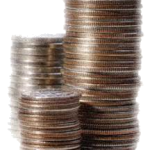FARMSIM
James W. Richardson (Texas A&M University)
Overview
| Model category | CSM |
|---|---|
| Plant part | Shoot |
| Scale | Field |
| Licence | upon_request |
| Operating system | Windows |
| Programming language | Excel, Fortran |
| Format of model inputs and outputs | Excel files |
| Species studied | Maize, Common-beans, Cassava, Bananas, Cotton, Sorghum, Sweet-potatoes, Coffee, Millet, Groundnuts, Yams-palms, Cowpea, Taro-tea, Soybean, Potato, Pigeon-pea |
| Execution environment | Microsoft Office Excel |
Scientific article
Agricultural technology assessment for smallholder farms: An analysis using a farm simulation model (FARMSIM)Jean-Claude Bizimana,James W. RichardsonComputers and Electronics in Agriculture, 2019 View paper
Model description
FARMSIM is a simulation model used for projecting the probable economic and nutritional impacts of alternative technologies, farming systems, livestock management programs, marketing arrangements, crop mixes, risk management schemes, and environmental remediation programs on a representative crop/livestock farm. The model simulates the base scenario and the alternative scenario using the same underlying stochastic weather history in APEX and NUTBAL so the differences in the results are due to the management variables that define the scenarios. For example, the analysis of an improved vaccine to control a cattle disease will use the same stochastic forage and crop residue values for the base and alternative scenario, so the difference in the farm’s economic and nutritional results are due to only the impact of the vaccine on animal health and improved performance, and added costs for the vaccine. The outputs from FARMSIM are estimates of empirical probability distributions for more than 100 key output variables (KOV). Probabilities of the KOV’s exceeding target levels and falling below maximums accepted values are displayed graphically in StopLight charts as shown below.
Some case studies
